
Table of Contents
Scientific Classification
- Kingdom: Animalia
- Phylum: Chordata
- Class: Reptilia
- Order: Squamata
- Family: Varanidae
- Genus: Varanus
- Species: V. exanthematicus
Quick Overview
The Savannah Monitor (Varanus exanthematicus) is a medium-sized species of monitor lizard native to the savannas of Africa. Known for its robust build and relatively docile nature, it has gained popularity among reptile enthusiasts worldwide.
Fast Facts
- Scientific Name: “Varanus exanthematicus”
- Lifespan: 10-15 years in captivity, shorter in the wild
- Average Size: 2.5-4 feet in length
- Diet: Carnivorous
- Habitat: Grasslands and savannas of Africa
Did you know?
Savannah Monitors, like other monitor lizards, have forked tongues similar to those of snakes, which they use to sense their environment.
Appearance
Savannah Monitors have a stout, muscular body with strong limbs. Their skin is thick and covered in bead-like scales, ranging from tan to grey in color with darker markings that help them blend into their surroundings.
Size and Weight
Typically, adult Savannah Monitors will measure between 2.5 to 4 feet in length. They are hefty lizards, with some adults weighing over 15 pounds.
Temperament and Behavior
When properly socialized, Savannah Monitors can be docile and may tolerate handling. However, they are solitary in nature and can be territorial. They are also known for their intelligence and curiosity.
Fun Fact:
In the wild, Savannah Monitors are known to utilize burrows not just for shelter but also to regulate their body temperature.
Habitat and Distribution
They are primarily found in the grasslands and savannas of sub-Saharan Africa, from Senegal east to Sudan and down to the Democratic Republic of the Congo.
Care Guide
If considering a Savannah Monitor as a pet:
- A large enclosure with adequate ventilation. These active lizards need space.
- A basking spot with temperatures of around 100-110°F.
- A varied diet of insects, rodents, and occasionally fish.
- A substrate that allows for burrowing.
- Regular health checks, as they can be prone to obesity and related health issues in captivity.
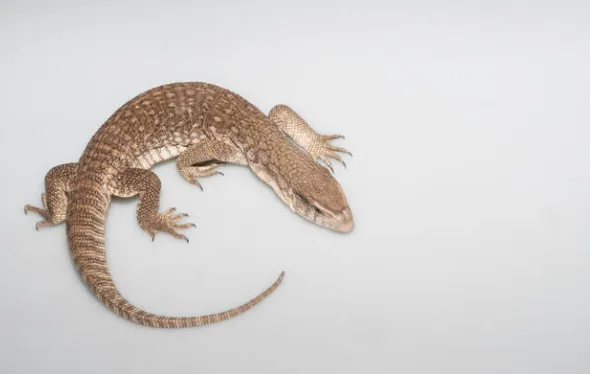
Diet and Nutrition
In the wild, they are opportunistic hunters, eating a variety of insects, small birds, rodents, and eggs. In captivity, a diet mainly composed of insects and the occasional rodent is recommended.
Health and Wellness
Common health issues for captive Savannah Monitors include obesity, metabolic bone disease, and parasitic infections. Regular veterinary check-ups and a proper diet are crucial for their well-being.
Breeding
Breeding Savannah Monitors in captivity can be challenging. Females lay clutches of eggs which need specific humidity and temperature conditions to successfully hatch.
Conservation Status
While not currently endangered, the pet trade and habitat loss have impacted Savannah Monitor populations in the wild. Ethical and sustainable practices are essential for their continued survival.
Fun Fact:
Despite their robust appearance, these monitors are adept climbers and swimmers, showcasing their versatility in the wild.
Photo Gallery
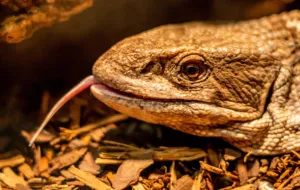
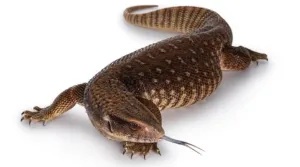
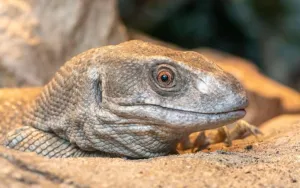
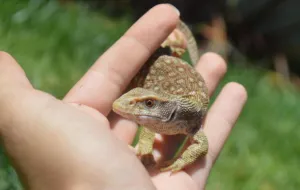
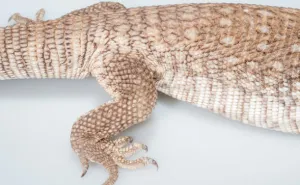
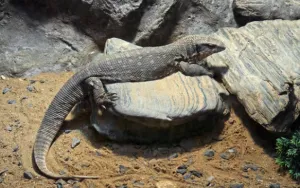
Related Profiles
Share This Profile:
3 Amazing Facts About Savannah Monitor
- Heat Sensors: Savannah Monitors have specialized sensory organs in their snouts, which allow them to detect heat. This helps them locate prey even in the dense grasslands.
- Master Diggers: They can dig deep burrows, which they use for shelter from predators and the intense African sun.
- Mighty Jaws: With powerful jaws and sharp teeth, they can crush hard-shelled prey like beetles and snails.
- Eastern Rat Snake: Nature’s Pest Control and Fascinating Reptile - September 20, 2024
- Eastern Racer: The Fast and Agile Snake - September 19, 2024
- The Eastern Indigo Snake: The Majestic, Non-Venomous Hunter of the Southeast - September 18, 2024
